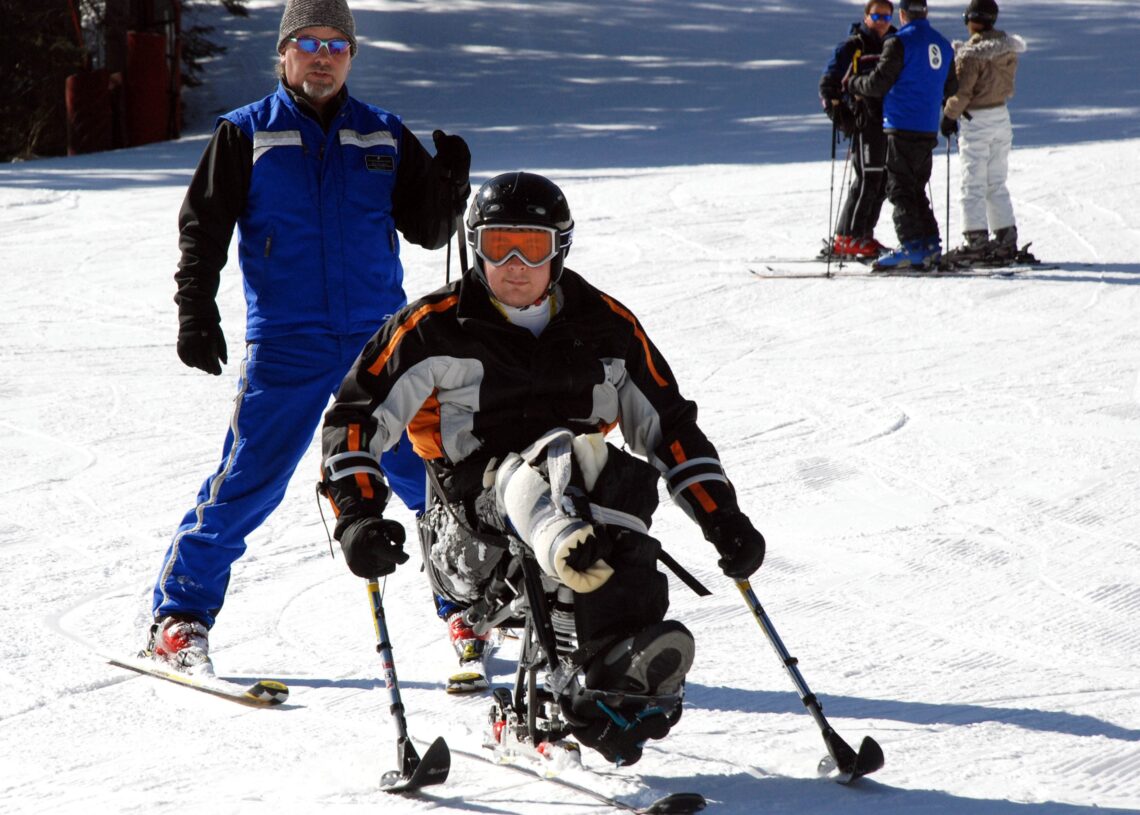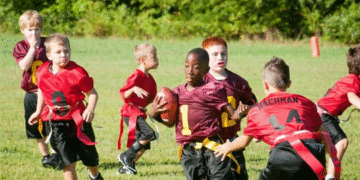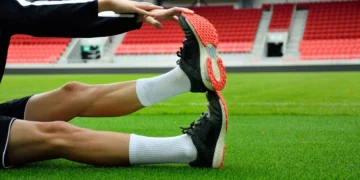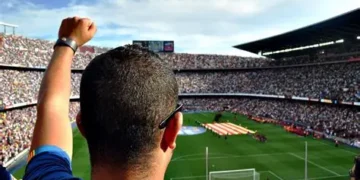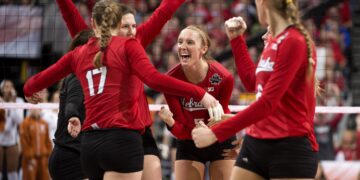From the Ground Up: The Expanding World of Adaptive Athletics
The realm of sports is in perpetual motion, and adaptive athletics are at the forefront of this dynamic shift. Fueled by events that spotlight athletic achievement, a growing movement towards inclusivity and innovation is revolutionizing the ways individuals of all abilities engage with physical activity.
Inspiring the Next Generation
The influence of global sporting events is particularly evident among younger demographics, who are increasingly drawn to adaptive sports. Many young athletes are introduced to both traditional and adaptive sports through themed “try-it” events hosted at local facilities in conjunction with major competitions. This surge in interest is paving the way for a future where sports are more accessible and inclusive for all.
Pickleball: A Game for Everyone
The surge in popularity of pickleball is especially notable. Between 2022 and 2023, over one million individuals under the age of eighteen began playing the sport. This growth has prompted initiatives to establish dedicated adaptive divisions and introduce varsity-level competitions in public schools, thereby broadening the accessibility of pickleball to a more diverse range of participants.
| Year | Age Group | Sport | New Participants (2022–2023) | Adaptive/Inclusive Programs Available |
|---|---|---|---|---|
| 2024 | Under 18 | Pickleball | 1,000,000+ | Yes |
Data Source: SFIA’s 2024 Topline Participation Report (as cited in Sports Facilities Companies “2025 Fitness and Recreation Trends”) Published: 2025 January
The rising number of young pickleball players signals a broader trend toward inclusive sports, with dedicated programs ensuring accessibility.
Building Community Through Sport
Adaptive sports extend beyond the realm of elite competition, fostering enhanced community engagement. By weaving innovation and inclusivity into grassroots programs, adaptive sports are catalyzing enduring change. This evolution broadens access and creates avenues for individuals of all abilities to flourish in sports.
Wheelchair Basketball: A Testament to Inclusivity and Athleticism
Wheelchair basketball transcends the definition of a mere sport; it serves as a robust catalyst for inclusivity and athletic excellence. The sport’s expanding global presence and the inspiring narratives of the athletes involved highlight its profound impact.
A Global Phenomenon
Wheelchair basketball is gaining momentum worldwide, showcasing the extraordinary athletic capabilities of individuals with disabilities. The 2025 IWBF U23 Men’s World Championship, which featured twelve nations, underscored the sport’s escalating global competitiveness. This increasing diversity signals a widening talent pool and greater investment in adaptive sports at the international level.
Rising Stars on the World Stage
The championship was marked by several outstanding performances, including Italy’s best-ever sixth-place finish, demonstrating the emergence of new contenders in the sport. Similarly, the USA team demonstrated progress, advancing one position from their 2021 ranking.
Beyond the Court
Wheelchair basketball is instrumental in promoting inclusion and transforming perceptions of athletic achievement among individuals with disabilities. The increasing visibility of adaptive sports is crucial for driving accessibility and challenging conventional notions of what athletes are capable of achieving.
The Role of Technology: Assistive Equipment and Enhanced Performance
Advancements in assistive equipment are pivotal in making adaptive sports more inclusive. These innovations are not merely about creating a level playing field; they are about unlocking potential and transforming the sporting experiences of athletes with disabilities.
Technology Integration
Assistive equipment now incorporates state-of-the-art technology. Wearable sensors, GPS tracking, and AI-driven analytics are increasingly prevalent in adaptive sports gear. This technology enables athletes to optimize their performance while minimizing the risk of injury, providing a competitive advantage and safer training conditions.
Innovations in Mobility Aids
The evolution of mobility aids is significantly impacting adaptive sports. Wheelchairs, prosthetics, and exoskeletons are becoming more sophisticated and accessible, empowering more individuals to participate, fostering physical independence, and enhancing psychological well-being through sports.
Institutional Support
Organizations are increasing their support for adaptive sports. The USOPC, in partnership with collegiate programs, is expanding resources and inclusion initiatives. Programs such as the Para-college sport hub are fostering greater participation and providing critical support to adaptive athletes across all levels.
The collaboration between organizations and collegiate programs highlights a growing commitment to supporting adaptive sports through resource expansion and inclusive initiatives.
Creating Inclusive Training Environments
Inclusive training environments are essential for advancing adaptive sports, going beyond traditional coaching methods.
Addressing Challenges in Physical Education
Recent studies indicate that physical education teachers often face difficulties in creating inclusive settings for students with disabilities. Common challenges include inadequate training, insufficient resources, and negative attitudes among staff and peers, all of which impede effective inclusion.
Bridging Policy and Practice
Despite policies that advocate for diversity and inclusion in school-based physical education, implementation often falls short. Vague guidelines and limited support can result in students with disabilities not experiencing the same level of activity or feeling excluded.
Implementing Systematic Improvements
Experts recommend several key improvements to foster truly inclusive adaptive sports environments. These include targeted professional development for coaches and educators, cross-departmental collaboration, and ongoing accessibility audits of training materials.
Engaging with People with Disabilities
Actively involving people with disabilities in the design of adaptive sports programs is crucial. This ensures that programs are not only accommodating but genuinely inclusive, providing meaningful physical activity opportunities for all participants.
Expanding Access: New Standards in Accessibility
Adaptive sports are evolving to move beyond simple participation and embrace genuine inclusivity. Recent changes are reshaping access for athletes, ensuring that everyone has the opportunity to engage fully.
Legislative Progress
Several states are enacting laws to mandate insurance coverage for recreational prosthetic and orthotic care. This helps eliminate financial barriers that previously prevented many individuals with limb differences or mobility impairments from participating in sports, marking a significant step toward leveling the playing field.
Grassroots Advocacy
Organizations such as “So Every BODY Can Move” are actively advocating for similar legislation nationwide. These efforts are gaining momentum, particularly with the approach of a major international competition, underscoring the importance of inclusive practices and policies.
Educational Inclusivity
School districts are proactively expanding varsity-level adaptive sports to enable students with disabilities to participate alongside their peers. This integration promotes inclusivity and provides valuable opportunities for students with physical and learning disabilities.
Collegiate Resources
The introduction of new collegiate resources, such as the USOPC/NCAA Para-college sport hub, further supports the systemic growth of adaptive athletics on campuses. These resources help foster a more inclusive athletic environment for students with disabilities.
Ensuring Fair Play: Classification Systems in Adaptive Athletics
Adaptive athletics continuously evolve to provide fair and inclusive environments for athletes with disabilities. Understanding the classification systems that underpin these sports is key to appreciating the commitment to equity and access.
The Role of Classification
Classification systems in adaptive sports are designed to ensure fair competition. These systems group athletes with similar functional abilities, ensuring that competition is based on skill and strategy rather than the degree of impairment. This approach promotes fair play and encourages participation.
Dynamic Systems
Recent trends emphasize dynamic and merit-based classification. For example, a table tennis organization introduced a selection process prioritizing ongoing performance and weekly updated rankings. This shift rewards consistent effort and aims to foster a more competitive and inclusive environment.
Inclusion in Team Composition
Inclusion is also reflected in team composition rules. An international cheer union mandates that adaptive cheerleading teams include a minimum percentage of athletes with disabilities. Its rules outline divisions and eligibility criteria, reinforcing transparent classification systems for fair competition.
Expanding Access and Development
Evolving classification systems are critical for expanding access and boosting athlete development. By promoting fair play, these systems drive the broader movement for inclusion. The ongoing refinement of these systems reflects a growing commitment to revolutionize accessibility and representation in adaptive athletics.
Q&A
Question 1: What specific sport demonstrates a significant surge in participation among youth, and what factors contribute to this growth?
Answer: Pickleball shows a significant surge in youth participation, with over one million individuals under eighteen taking up the sport between 2022 and 2023. This growth is fueled by the increasing popularity of the sport in general, “try-it” days at local facilities timed with major competitions, and the creation of dedicated adaptive divisions and varsity-level competitions in public schools.
Question 2: How are advancements in assistive equipment impacting adaptive sports, and what types of technologies are being integrated?
Answer: Advancements in assistive equipment are making adaptive sports more inclusive and are unlocking athletes’ potential. Cutting-edge technologies like wearable sensors, GPS tracking, and AI-powered analytics are being integrated into gear to optimize performance and minimize injury risk. Improvements in mobility aids like wheelchairs, prosthetics, and exoskeletons are also empowering more individuals to participate.
Question 3: What are some key challenges and recommended improvements for creating truly inclusive training environments in adaptive sports, particularly within physical education settings?
Answer: Challenges include inadequate teacher training, insufficient resources, and negative attitudes. Recommended improvements include targeted professional development for coaches and educators, cross-departmental collaboration, accessibility audits of training materials, and actively involving people with disabilities in program design to ensure genuine inclusivity.
Question 4: How are legislative and grassroots efforts contributing to improved accessibility in adaptive sports?
Answer: Several states are mandating insurance coverage for recreational prosthetic and orthotic care, removing financial barriers. Grassroots organizations like “So Every BODY Can Move” are advocating for nationwide legislation. Additionally, school districts are expanding varsity-level adaptive sports and collegiate resources like the USOPC/NCAA Para-college sport hub are being developed to support systemic growth.
